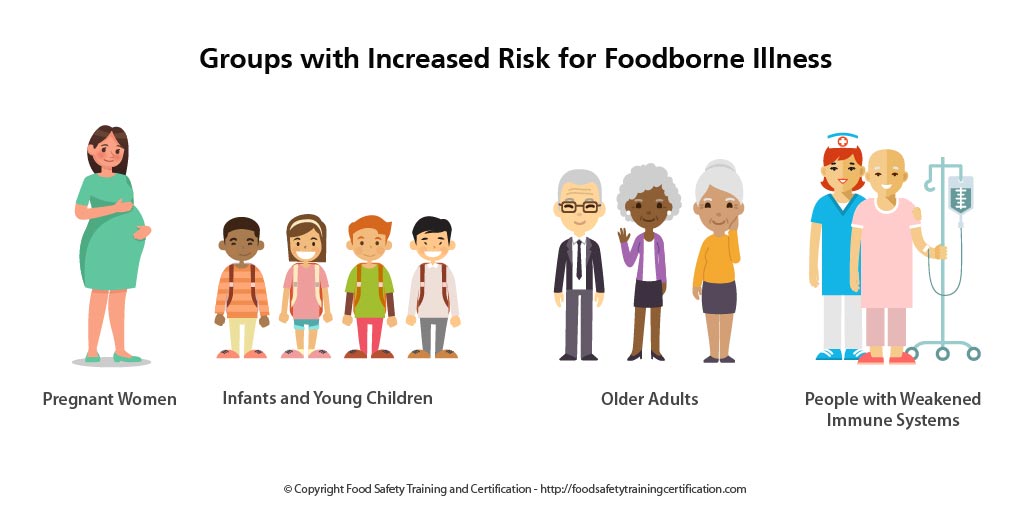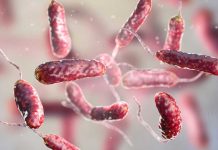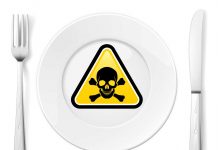Proper management of a food establishment operation begins with employing healthy people and instituting a health system of identifying employees who present a risk of transmitting pathogens.



The person in charge is responsible for ensuring all food employees and conditional employees are knowledgeable and understand their responsibility to report listed symptoms, diagnosis with an illness from a listed pathogen, or exposure to a listed pathogen to the person in charge. The person in charge is also responsible for reporting to the regulatory official if a food employee reports a diagnosis with a pathogen.
- Learn about proper hygiene, cross contamination, cold and hot food safety, foodborne pathogens, and best practices to prevent foodborne illness.
- Food Manager Training & ANSI Certification - $99.00
- Food Handler Training - only $7.00!
- HACCP Training: 16hr/4hr/1hr
- Food Allergy Training - $15.00
- Enter Promo "train10off" at Checkout
Employee Health Policy Questions
The development and effective implementation of an employee health policy is to maintain a work environment. Below are a few questions to help determine in your employee health policy is adequate.
Source: FDA Food Code Subpart 2-201 – Infected Food Employees and Conditional Employees, pp. 355-356
- Does the food service operation have an Employee Health Policy? If so, are the food employees aware of the employee health policy, and is it available in written format and readily available for food employees?
- Does the food service operation require conditional employees and food employees to report certain illnesses, conditions, symptoms, and exposures?
- Are the reporting requirements explained to all employees?
- What are the reporting requirements for conditional employees, food employees, and the food establishment manager?
- Are conditional employees asked if they are experiencing certain symptoms or illnesses upon offer of employment? If so, which symptoms or illnesses?
- If a food employee reports a diagnosis, what questions are asked of the food employee? (The first question every food manager should ask a food employee who reports diagnosis with a listed pathogen is if the employee is currently having any symptoms.)
- Who does the food service operation notify when a food employee reports a diagnosis with one of the listed pathogens?
- What symptoms would require exclusion of a food employee from the food establishment?
- What history of exposure is a conditional employee or food employee required to report?
- If a food employee reports a symptom, what criteria are used to allow the employee to return to work?
Symptoms of Illnesses
- Common symptoms of foodborne illness are diarrhea and/or vomiting, typically lasting 1 to 7 days. Other symptoms might include abdominal cramps, nausea, fever, joint/back aches, and fatigue.
- What some people call the “stomach flu” may actually be a illness caused by a pathogen (i.e., virus, bacteria, or parasite) in contaminated food or drink.
- The incubation period (the time between exposure to the pathogen and onset of symptoms) can range from several hours to 1 week.



People (Groups) Vulnerable to Illness
Foodborne illness can affect anyone who eats contaminated food. However, certain populations are more susceptible to becoming ill with a greater severity of illness. These groups include:
- Pregnant women;
- Infants and young children;
- Older adults;
- People taking certain kinds of medications or with immune systems weakened from medical conditions, such as diabetes, liver disease, kidney disease, organ transplants, HIV/AIDS, or from receiving chemotherapy or radiation treatment.
Most people with a foodborne illness get better without medical treatment, but people with severe symptoms should see their doctor.



These vulnerable groups should take extra precautions and avoid the following foods:
- Raw or rare meat and poultry;
- Raw or undercooked fish or shellfish;
- Raw or undercooked eggs or foods containing them ( cookie dough and homemade ice cream);
- Fresh sprouts;
- Unpasteurized ciders or juices;
- Unpasteurized milk and milk products;
- Uncooked hot dogs.
Biological Food Pathogens
The chart below includes foodborne disease-causing organisms that frequently cause illness in the United States.
| Organism | Onset Time After Ingesting | Signs & Symptoms | Duration | Food Sources |
|---|---|---|---|---|
| Bacillus cereus | 10-16 hrs | Abdominal cramps, watery diarrhea, nausea | 24-48 hours | Meats, stews, gravies, vanilla sauce |
| Campylobacter jejuni | 2-5 days | Diarrhea, cramps, fever, and vomiting; diarrhea may be bloody | 2-10 days | Raw and undercooked poultry, unpasteurized milk,contaminated water |
| Clostridium botulinum | 12-72 hours | Vomiting, diarrhea, blurred vision, double vision, difficulty in swallowing, muscle weakness. Can result in respiratory failure and death | Variable | Improperly canned foods, especially home-canned vegetables, fermented fish, baked potatoes in aluminum foil |
| Clostridium perfringens | 8–16 hours | Intense abdominal cramps, watery diarrhea | Usually 24 hours | Meats, poultry, gravy, dried or precooked foods, time and/or temperature-abused foods |
| Cryptosporidium | 2-10 days | Diarrhea (usually watery), stomach cramps, upset stomach, slight fever | May be remitting and relapsing over weeks to months | Uncooked food or food contaminated by an ill food handler after cooking, contaminated drinking water |
| Cyclospora cayetanensis | 1-14 days, usually at least 1 week | Diarrhea (usually watery), loss of appetite, substantial loss of weight, stomach cramps, nausea, vomiting, fatigue | May be remitting and relapsing over weeks to months | Various types of fresh produce (imported berries, lettuce, basil) |
| E. coli (Escherichia coli) producing toxin | 1-3 days | Watery diarrhea, abdominal cramps, some vomiting | 3-7 or more days | Water or food contaminated with human feces |
| E. coli O157:H7 | 1-8 days | Severe (often bloody) diarrhea, abdominal pain and vomiting. Usually, little or no fever is present. More common in children 4 years or younger. Can lead to kidney failure. | 5-10 days | Undercooked beef (especially hamburger), unpasteurized milk and juice, raw fruits and vegetables (e.g. sprouts), and contaminated water |
| Hepatitis A | 28 days average (15-50 days) | Diarrhea, dark urine, jaundice, and flu-like symptoms, i.e., fever, headache, nausea, and abdominal pain | Variable, 2 weeks-3 months | Raw produce, contaminated drinking water, uncooked foods and cooked foods that are not reheated after contact with an infected food handler; shellfish from contaminated waters |
| Listeria monocytogenes | 9-48 hrs for gastro-intestinal symptoms, 2-6 weeks for invasive disease | Fever, muscle aches, and nausea or diarrhea. Pregnant women may have mild flu-like illness, and infection can lead to premature delivery or stillbirth. The elderly or immunocompromised patients may develop bacteremia or meningitis. | Variable | Unpasteurized milk, soft cheeses made with unpasteurized milk, ready-to-eat deli meats |
| Noroviruses | 12-48 hrs | Nausea, vomiting, abdominal cramping, diarrhea, fever, headache. Diarrhea is more prevalent in adults, vomiting more common in children. | 12-60 hrs | Raw produce, contaminated drinking water, uncooked foods and cooked foods that are not reheated after contact with an infected food handler; shellfish from contaminated waters |
| Salmonella | 6-48 hours | Diarrhea, fever, abdominal cramps, vomiting | 4-7 days | Eggs, poultry, meat, unpateurized milk or juice, cheese, contaminated raw fruits and vegetables |
| Shigella | 4-7 days | Abdominal cramps, fever, and diarrhea. Stools may contain blood and mucus. | 24-48 hrs | Raw produce, contaminated drinking water, uncooked foods and cooked foods that are not reheated after contact with an infected food handler |
| Staphylococcus aureus | 1-6 hours | Sudden onset of severe nausea and vomiting. Abdominal cramps. Diarrhea and fever may be present. | 24-48 hours | Unrefrigerated or improperly refrigerated meats, potato and egg salads, cream pastries |
| Vibrio parahaemolyticus | 4-96 hours | Watery (occasionally bloody) diarrhea, abdominal cramps, nausea, vomiting, fever | 2-5 days | Undercooked or raw seafood, such as shellfish |
| Vibrio vulnificus | 1-7 days | Vomiting, diarrhea, abdominal pain, bloodborne infection. Fever, bleeding within the skin, ulcers requiring surgical removal. Can be fatal to persons with liver disease or weakened immune systems. | 2-8 days | Undercooked or raw seafood, such as shellfish (especially oysters) |
Summary
It is very important to understand what, why, and how foods can make you sick, but more importantly, the food safe principles and procedures to prevent foodborne illnesses.






